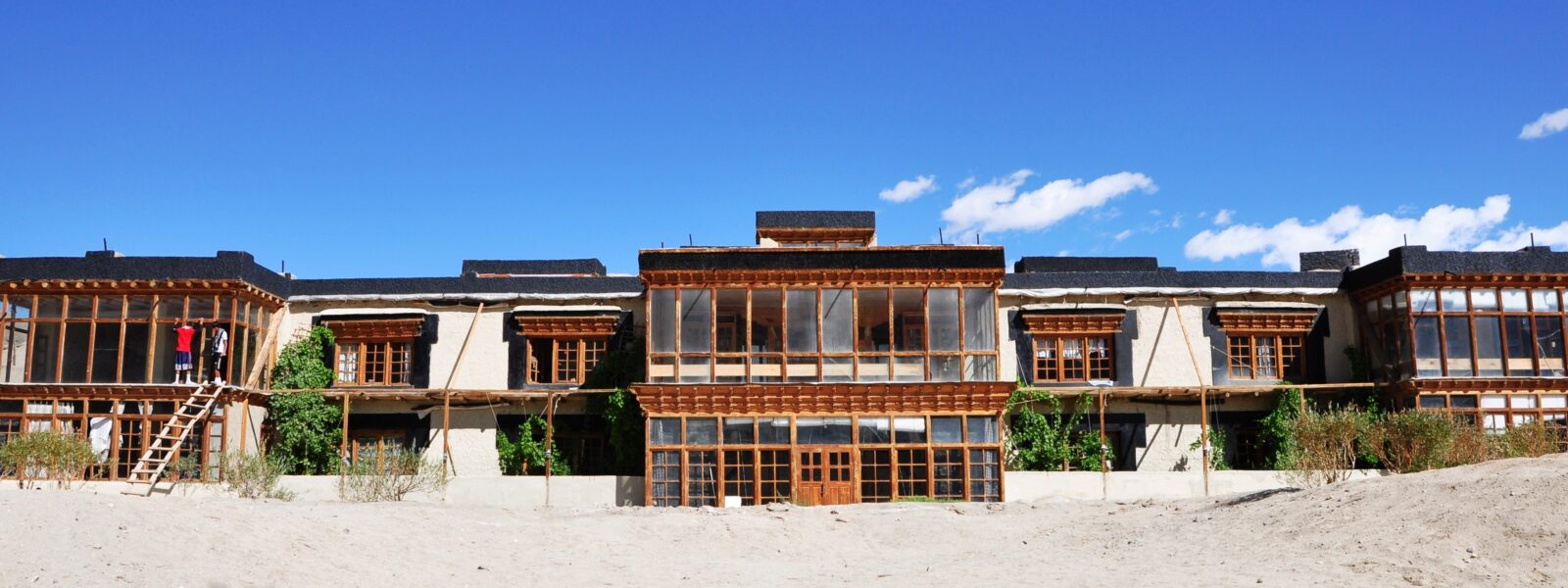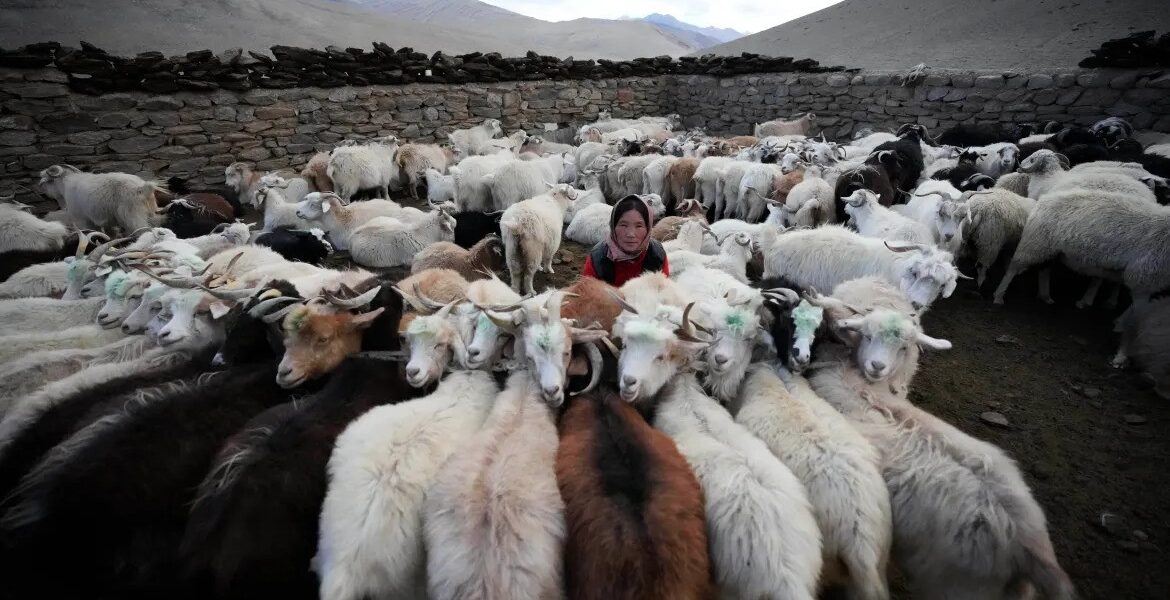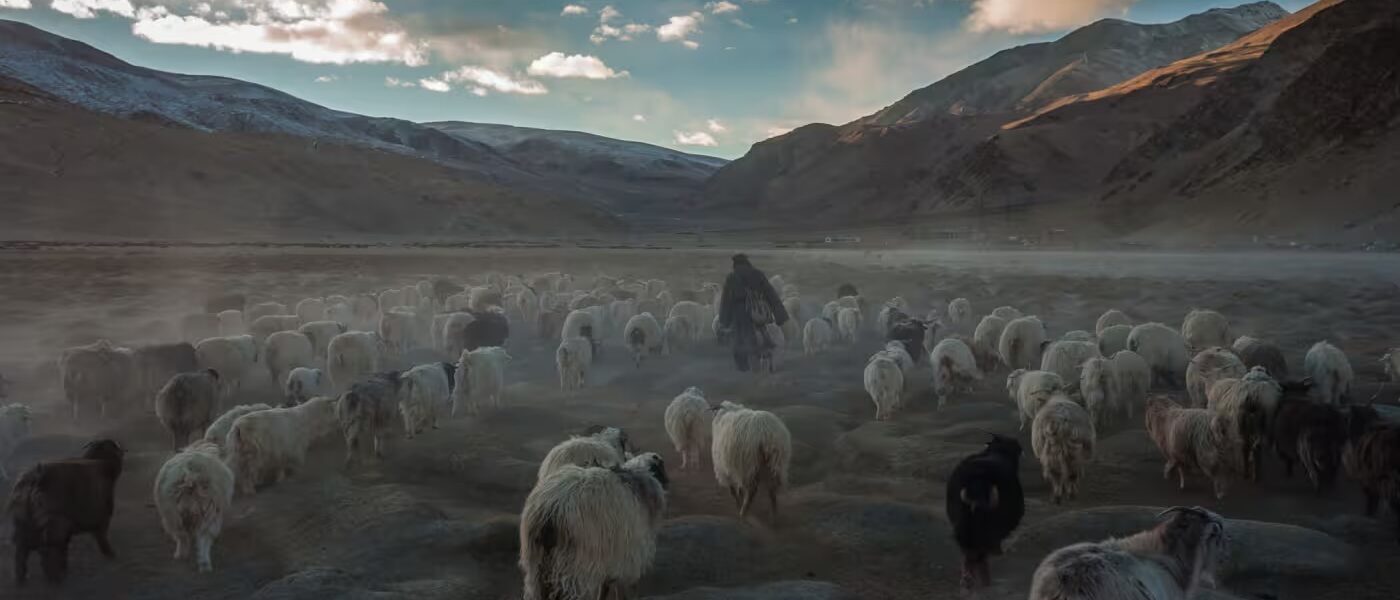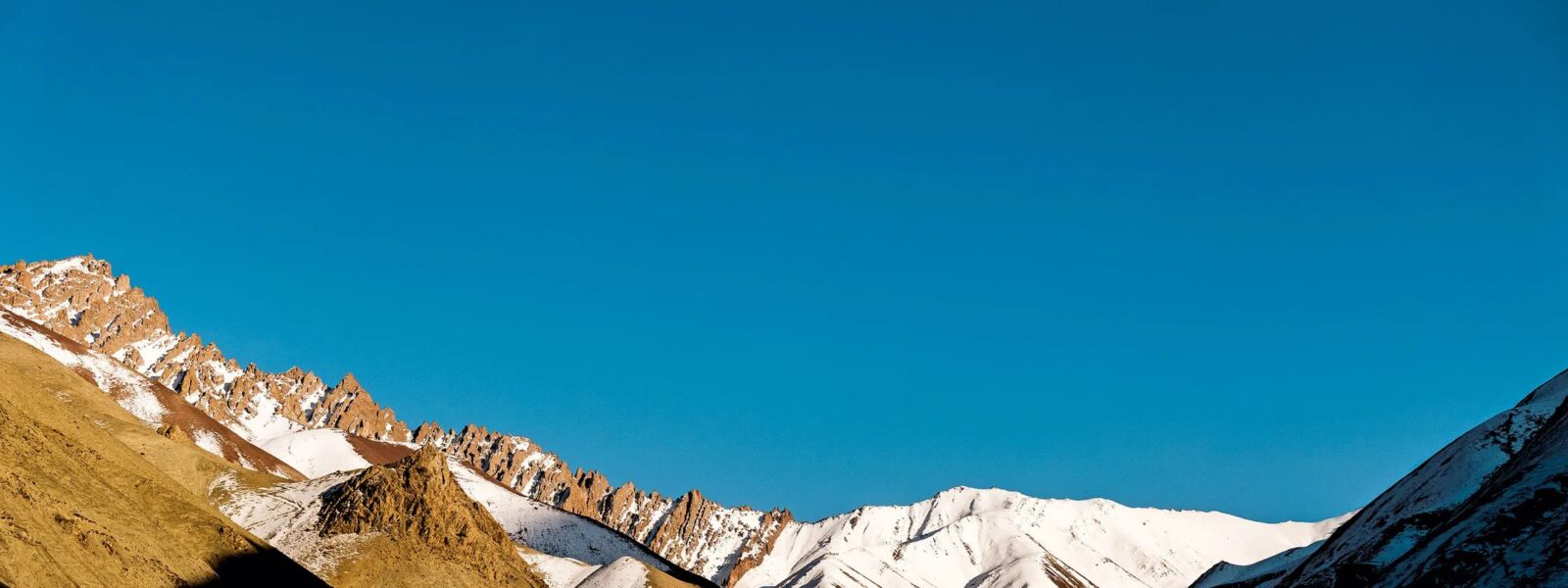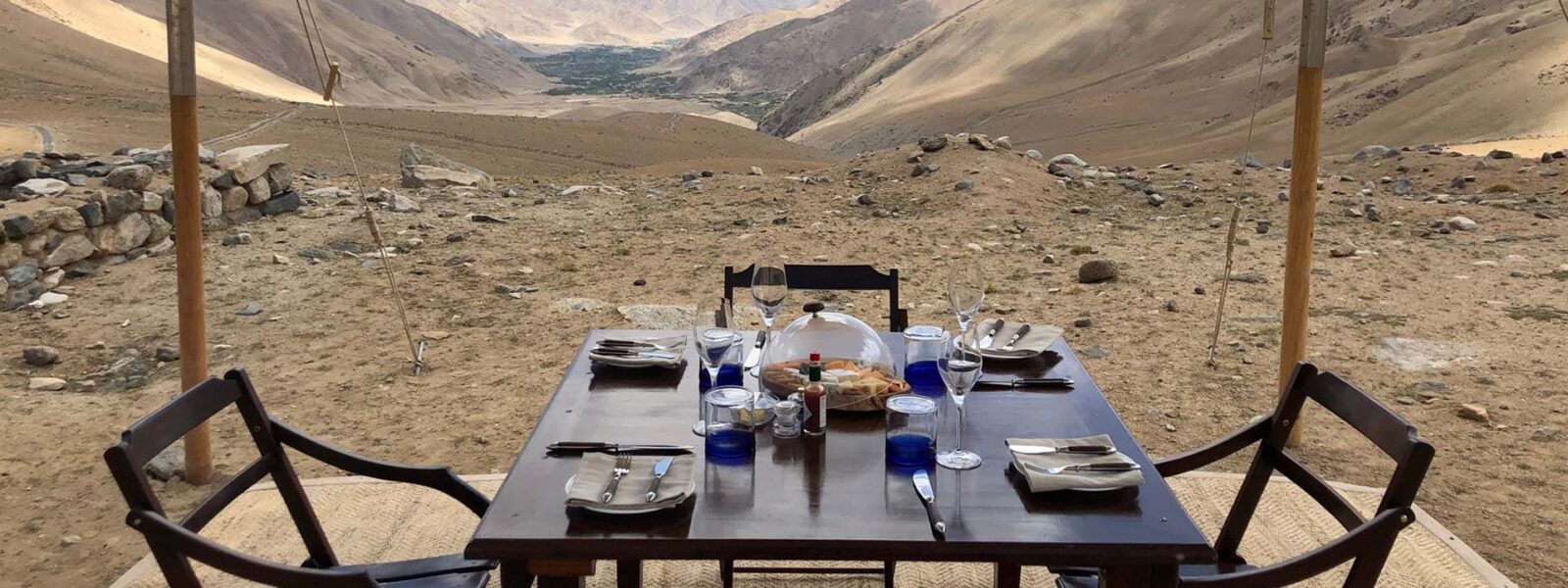A School the System Forgot
High above the plains of Northern India, where the winds carry stories older than nations, a small cluster of sun-dried mud buildings nestles beside the Indus River. It is here, in a quiet fold of Ladakh’s crumpled geography, that SECMOL was born—not from policy, nor prestige, but failure. Or more precisely, the kind of failure the system writes into the margins of every report card.
When Sonam Wangchuk, a Ladakhi engineer and educator, began to question why so many bright young students were deemed “failures” under the government school system, he did not write a paper or petition a ministry. He built a school. One where the labels assigned by institutions held no weight. One where intelligence had nothing to do with memorization, and everything to do with curiosity, hands, weather, and tools.
SECMOL—short for the Students’ Educational and Cultural Movement of Ladakh—is not a school in the conventional sense. There are no bells. No uniforms. No classrooms filled with rows of bored faces. Instead, there are goats to feed, solar panels to repair, discussions in English under apricot trees, and compost toilets to maintain. It is a place built on action, not abstraction.
The campus lies in Phey, 18 kilometers from Leh, and blends seamlessly into the ochre landscape. The buildings are handmade from mud brick, designed to passively store heat through long Himalayan winters. Electricity is solar. Water is melted snow. Curriculum is organic. Every inch of the school is not just about living, but living right.
Visitors from Paris, Lisbon, Ljubljana, and beyond come with expectations of a rustic eco-campus. What they discover is something closer to a living philosophy—one where pedagogy is not imported, but rooted. A French volunteer I met there once whispered, “This place makes you unlearn first. Then it teaches.” She was scrubbing plates beside a young boy from Kargil who had just led a campus-wide conversation on sustainable irrigation.
In a world where education is often measured in ranks and test scores, SECMOL offers an antidote. It challenges our most sacred assumptions: that a child must conform to succeed, that wisdom lives in books, that buildings must burn coal to stay warm. It asks us, quietly but firmly, to rethink everything.
For those of us from the outside—especially from the structured schooling systems of Europe—it is not just a school. It is a provocation. And if you let it, a transformation.
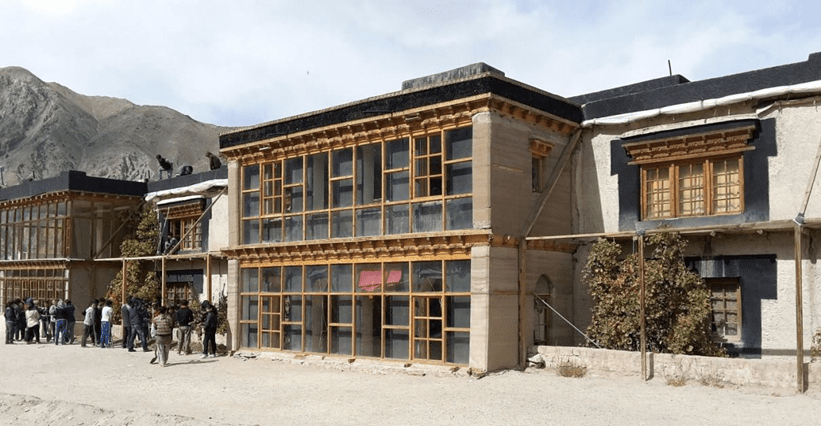
Meet the Man Behind the Movement — Sonam Wangchuk
In the high-altitude deserts of Ladakh, where the Himalayas cast long shadows over ancient monasteries, a quiet revolution in education and environmental activism has been unfolding. At the heart of this transformation is Sonam Wangchuk, an engineer, innovator, and reformist whose life’s work has been dedicated to empowering the youth of Ladakh and addressing the pressing challenges of climate change.
Born in 1966 in the village of Alchi, Wangchuk’s early education was unconventional. He was taught by his mother until the age of nine, after which he faced the harsh realities of a formal education system that was ill-suited to the cultural and geographical context of Ladakh. This experience ignited in him a passion for reforming education to make it more relevant and accessible to the children of his region.
In 1988, Wangchuk founded the Students’ Educational and Cultural Movement of Ladakh (SECMOL) with the aim of transforming the educational landscape of Ladakh. SECMOL’s approach was revolutionary: it focused on experiential learning, sustainability, and cultural relevance. The campus, located near the village of Phey, was constructed using traditional techniques and powered entirely by solar energy, embodying the principles it sought to teach.
Wangchuk’s innovations extend beyond education. In response to the water scarcity faced by Ladakhi farmers due to climate change, he developed the Ice Stupa—an artificial glacier that stores winter water in the form of ice cones, releasing it during the spring planting season. This ingenious solution has garnered international attention and has been replicated in other mountainous regions facing similar challenges.
In a poignant demonstration of the urgency of climate action, Wangchuk embarked on the #TravellingGlacier project in early 2025. He transported a piece of glacier ice from Khardung La in Ladakh to the United Nations Headquarters in New York, making stops at Harvard University in Boston along the way. The journey, spanning 12 days and half the globe, was a symbolic SOS to the world about the rapid melting of Himalayan glaciers. Upon the glacier’s arrival in New York, Wangchuk shared on social media: “Yes, after a 12 days journey halfway around the world, from Khardongla in Ladakh to New York my #TravellingGlacier melted into the ocean today. On this speaking tour it spoke more clearly & loudly than I could ever do… Hope you’ll heard it’s SOS message…” :contentReference[oaicite:0]{index=0}
Wangchuk’s efforts have not gone unnoticed. He has been honored with numerous awards, including the Ramon Magsaysay Award in 2018, often referred to as Asia’s Nobel Prize, recognizing his contributions to education and environmental sustainability. His work continues to inspire change-makers around the world, demonstrating that innovative, context-sensitive solutions can emerge from even the most remote corners of the globe.
For European readers, Wangchuk’s story is a compelling example of how localized, culturally attuned approaches can address global challenges. His blend of traditional wisdom and modern innovation offers valuable insights into sustainable living and education reform, resonating with ongoing conversations about climate action and social equity across Europe.
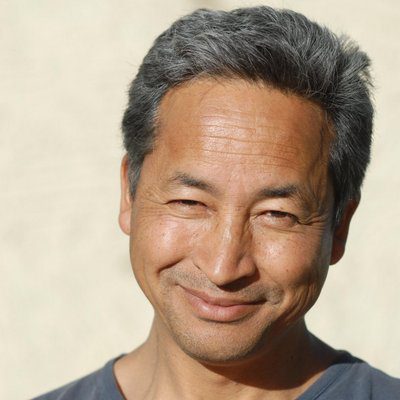
A Day in the Life at SECMOL Campus
The morning at SECMOL begins not with an alarm clock, but with the sun rising over the Stok range. Light pours into the mud-brick buildings, warming the earth-plastered walls that held the night’s chill. Somewhere, a pressure cooker whistles. A student shakes off sleep and steps into the courtyard barefoot, eyes squinting at the clarity of Ladakh’s unfiltered sky. This is not boarding school. This is something else entirely.
At 7:30 sharp, the entire campus gathers for a short meeting—led not by staff, but by students. Today’s agenda: an upcoming visitor tour, repair work on a solar heater, and a heated discussion about whether the kitchen team is wasting too much flour. At SECMOL, governance is horizontal. There is no headmaster. There is only the belief that every voice, including the shy one in the back, matters.
Breakfast is simple: barley porridge or tsampa, local bread, and butter tea. But the real nourishment happens elsewhere—in shared responsibility. After the meal, students disperse into task groups. One tends the solar cookers. Another cleans the compost toilets. A third team refills water drums from the melt-fed channels that bring life to this desert campus.
By mid-morning, the academic rhythm begins. English hour is taken seriously here—not with textbooks, but debates, games, and practical conversations. In another room, students edit short films, learning to tell their stories on their own terms. Others huddle around a disassembled inverter, guided not by lecture, but by intuition and trial.
Lunch is vegetarian, organic, and grown on-site wherever possible. The greenhouse built from recycled plastic keeps spinach alive through the punishing Ladakhi winter. After lunch, quiet hours begin—not for napping, but for reflection. Some write. Some read. Some simply walk under the apricot trees, watching the wind sketch new patterns on the sand.
In the afternoon, workshops take over: permaculture, media literacy, or climate adaptation. Sometimes, alumni return to teach. Sometimes, it’s foreign volunteers from Germany, Slovenia, or Spain, who bring new methods—but also learn from the ground-up intelligence SECMOL fosters. As one European volunteer once wrote in the community logbook: “I came to teach. I ended up learning how to think differently.”
Dinner is early. Nights in Ladakh fall fast and cold. But inside the common hall, warmth gathers. Students play traditional music. Others work on solar projects. The stars outside burn fiercely. The electricity inside comes from yesterday’s sun.
By 10 PM, silence descends—but not sleep. Thoughts wander. Of where the next Ice Stupa will rise. Of the next community that needs clean water. Of how the world beyond the mountains is changing, and how SECMOL must prepare to meet it. In this school without walls, education doesn’t end with a bell. It continues in dreams.
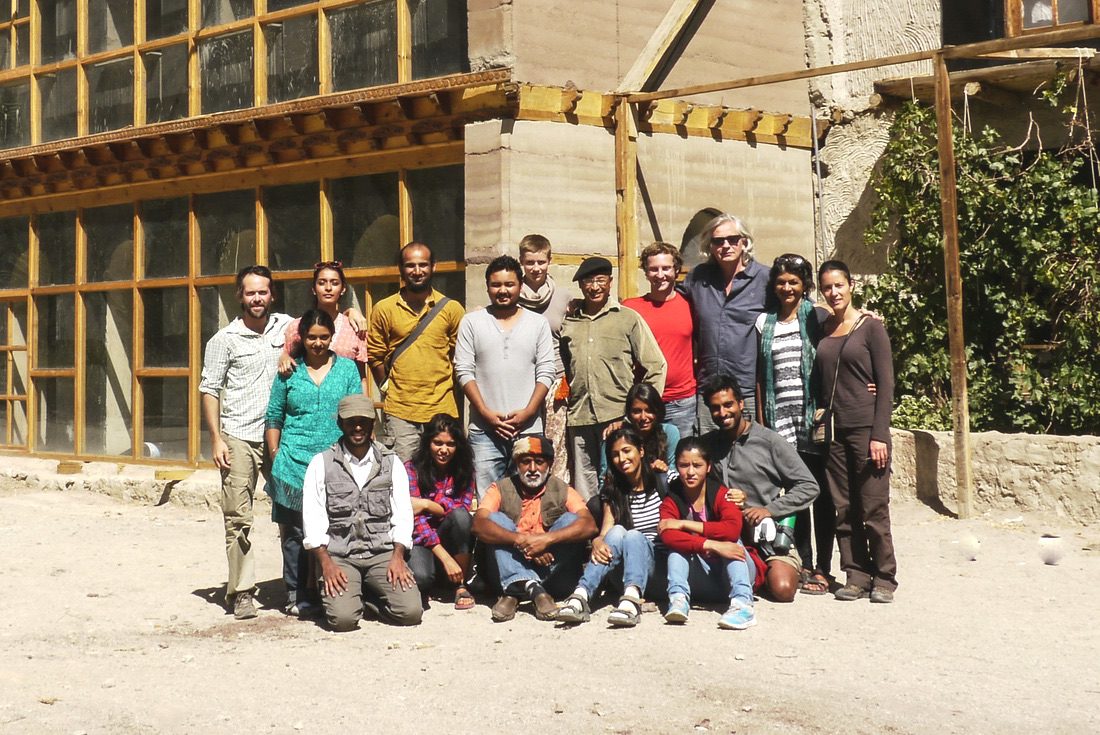
Visit SECMOL — But with Respect
If you’re reading this from Berlin, Rome, or Vienna and feel compelled to visit SECMOL—pause first. Not because you shouldn’t go, but because visiting SECMOL is not like visiting a museum, nor even a remote monastery in the Himalayas. It is a living, breathing community. One built on purpose, humility, and shared labor. To enter its gates is to step into someone else’s rhythm—one that must not be disturbed, only joined quietly.
SECMOL is located in the village of Phey, approximately 18 kilometers from Leh, the capital of Ladakh. The road winds through desert hills carved by ancient glacial flows. It is reachable by private taxi, bicycle, or on foot for the adventurous. There are no public buses that go directly to the campus. In summer months (May to September), access is relatively easy. In winter, however, temperatures drop below -15°C and visits are discouraged.
The campus opens its doors to visitors only on pre-scheduled days, typically twice a week (Tuesday and Friday mornings), although this is subject to change based on the students’ academic calendar and campus needs. All visitors must fill out a request form via the official website: https://www.secmol.org. Walk-ins are not accepted, and large groups require prior approval.
So what will you see? Mud buildings insulated with straw. Solar cookers gleaming under the high-altitude sun. Students making announcements in three languages. Composting toilets, passive heating systems, and a deep sense of collective purpose. But you’ll also see silence—moments where people are thinking, reading, reflecting. That silence is sacred. Respect it.
There are some things you must not do. Do not treat the students as curiosities. Do not arrive with a drone or a documentary team unless previously cleared. Do not offer candy to children or hand out flyers. This is not a social lab. It is a self-governed home. Photography is permitted in designated areas, but always ask before taking portraits.
If you are European and planning a “voluntourism” trip, know this: SECMOL is not the place to “save” anyone. The young people here are not in need of foreign saviors. They are solving problems in ways that would baffle many of our universities. Come not to fix, but to listen. Come with questions, not answers.
Finally, consider your carbon footprint. SECMOL is carbon-negative. Flights from Europe are not. If you make the journey, consider offsetting your emissions through verified climate projects—or better yet, extend your stay in the region and invest your presence with meaning.
To visit SECMOL is a privilege. One that must be earned, not consumed. Those who arrive with patience and humility often leave transformed—not by what they taught, but by what they learned.
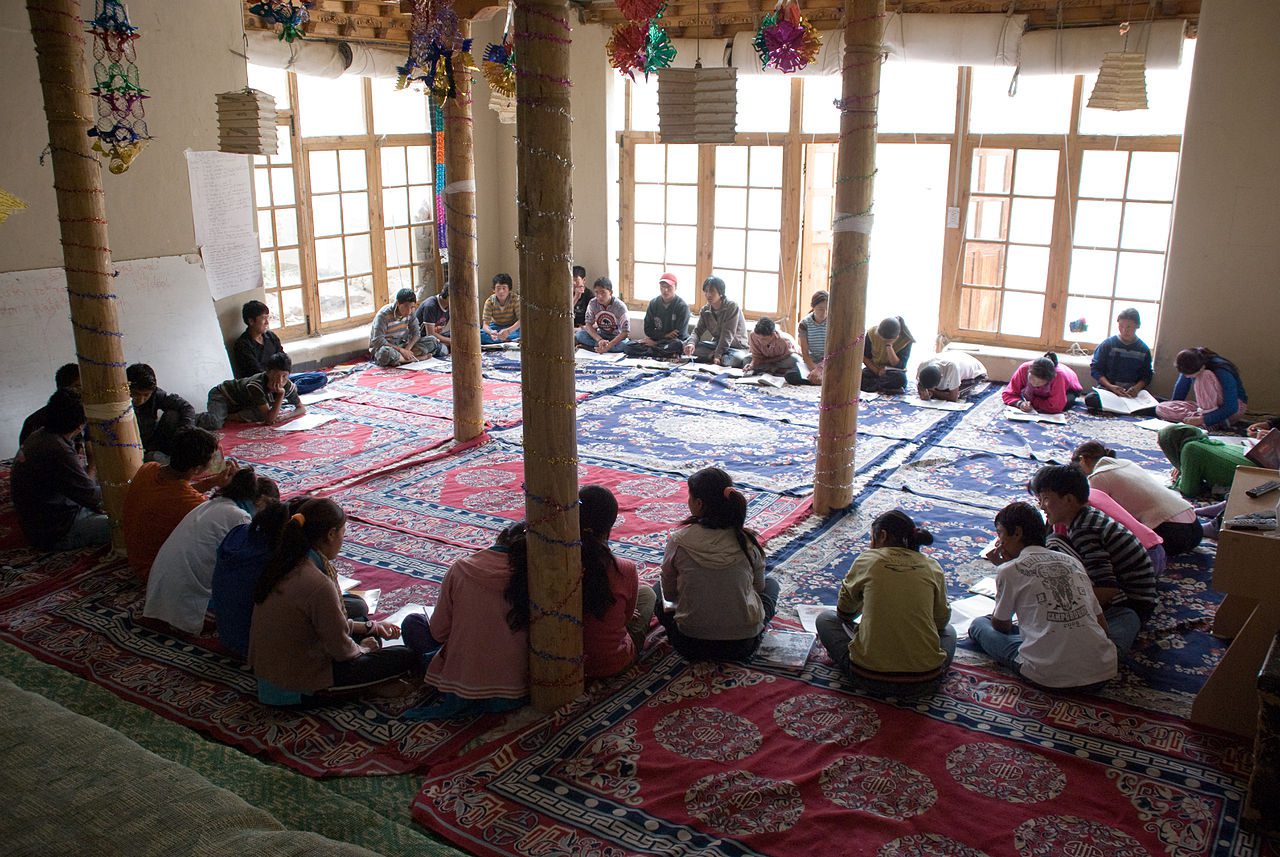
How to Volunteer at SECMOL
Not all education happens in classrooms—and not all classrooms need teachers in the traditional sense. At SECMOL, learning and teaching blur into one seamless act of living. For those coming from abroad—especially from Europe’s well-structured societies—volunteering here can feel both disorienting and profound. It demands that you unlearn your idea of “help” and replace it with the quiet discipline of being present.
SECMOL’s volunteer program is open to both Indian and international participants. The minimum stay is usually one month, with exceptions granted only in rare cases. Volunteers are expected to contribute meaningfully—not with heroic gestures, but with consistent, humble effort. You may find yourself teaching conversational English in the morning and washing solar panels by noon. By evening, you might be moderating a student debate on climate policy, seated cross-legged beside someone who learned to read only three years ago.
Applications must be submitted through the official SECMOL website. The process includes filling out a detailed form, writing a statement of purpose, and optionally participating in a video call with the program coordinator. Candidates are selected not for their credentials, but for their mindset. If you are curious, adaptable, and respectful, you are more than qualified.
Roles for volunteers are diverse:
- Conversational English coaching
- Media lab support (film, photography, editing)
- Renewable energy maintenance (solar systems)
- Permaculture and greenhouse assistance
- Library and academic help
Accommodation is provided on campus, in simple but comfortable shared rooms. Meals are vegetarian and largely organic, sourced from the garden and local markets. There is no alcohol on campus, and Wi-Fi is limited—both by design. Evenings are often spent in dialogue, quiet reflection, or playing traditional Ladakhi songs on handmade instruments.
A volunteer from Belgium once said: “I thought I would be teaching. But within days, I realized I was the student. These young people are light years ahead of us in emotional intelligence and planetary responsibility.”
Be warned: this is not for everyone. If you are seeking comfort, routine, or external validation, SECMOL will resist you. But if you are willing to live simply, listen carefully, and work with your hands as much as your head, the rewards are incalculable.
For those coming from Europe, volunteering at SECMOL is more than just a cross-cultural exchange—it is an invitation to witness a blueprint for a different kind of future. One that values sufficiency over excess, resilience over convenience, and collaboration over hierarchy.
To volunteer here is not to escape the world—but to meet it more honestly. And in doing so, to perhaps become a little more useful to it.
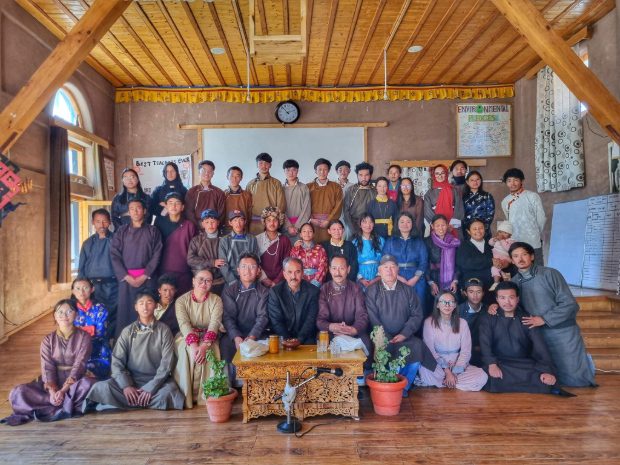
Real Voices from the Campus
The soul of SECMOL does not live in its buildings, its solar panels, or even its bold pedagogy—it lives in its people. Their words, their silences, their courage to relearn and reclaim a future that was once denied to them.
Tsering Dolkar was 15 when she first arrived at SECMOL. A shy girl from a remote village in Zanskar, she had failed her government school exams three years in a row. She describes the transition simply: “In my old school, I sat at the back. Here, I stand in the center.” Today, she leads media literacy workshops for new students and manages the solar power system that runs her dormitory block. She recently applied to a renewable energy institute in Germany—with a video portfolio she filmed, edited, and narrated herself.
Ngawang, a soft-spoken boy from Nubra, could barely read in two languages when he arrived. Now, he moderates bilingual debates on waste management and writes poetry in English. “The biggest thing I learned here,” he says, “was how to ask questions. Before SECMOL, I never thought my opinion mattered.”
But it is not just Ladakhi youth whose lives are reshaped by this campus. Thomas, a linguistics student from Lyon, came for a month. He stayed for four. “I came thinking I would share teaching methods,” he says. “But what I saw here—students teaching each other, electing their own leaders, fixing their own systems—I had never imagined education could look like this.” He left with fewer answers but far better questions.
Jana, a volunteer from Slovenia, documented her time at SECMOL in a series of illustrated journals. One drawing shows students gathered around a broken fan, tools in hand, solving the problem without adult supervision. In her caption, she wrote: “This is democracy in its purest form.”
SECMOL alumni are no longer just students—they are builders of ice stupas, creators of rural startups, journalists, and social entrepreneurs. They return to their villages not with certificates, but with systems—solar, social, and ethical. Their stories are not linear. Some fail again. Some struggle. But all carry the imprint of a place that dared to believe in their potential when few others did.
For European readers—accustomed to state-certified curricula and centralized education—these voices offer a glimpse into something radically different. Not a model to copy, but a provocation to rethink what is essential in the act of learning.
Because here, success is not measured in grades—it is measured in how many others you lift with you. In how well you leave your corner of the world when you finally return to it.
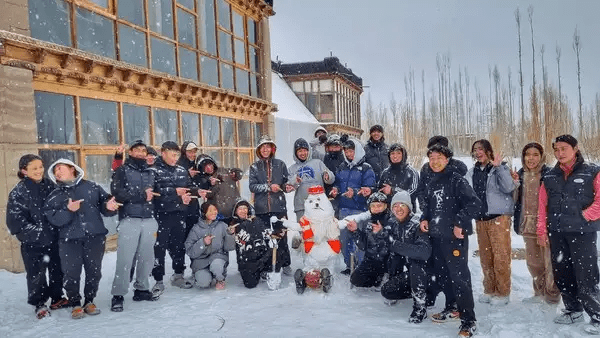
The SECMOL Model: Could It Work Elsewhere?
In a world increasingly fractured by climate crisis, inequality, and institutional fatigue, SECMOL offers not just a school—but a signal. It suggests that education can be personal, place-based, and profoundly practical. And that perhaps the most important learning doesn’t begin with standardized curricula, but with an honest look at where you stand in the world—and what your community actually needs.
At first glance, SECMOL’s methods seem hyper-local. Its mud walls, Ladakhi language workshops, and solar-cooked meals all speak to a specific high-altitude context. But beneath the adobe exterior lies a universal architecture: one of participation, sustainability, and agency.
What if rural schools in Spain had students managing their own solar energy budgets?
What if classrooms in the Scottish Highlands used compost toilets to learn about waste systems—and civic responsibility? What if remote villages in Slovakia could train young people not just to pass tests, but to create water-harvesting infrastructure?
SECMOL’s philosophy rests on five pillars that transcend geography:
- Contextual Learning: Curriculum rooted in local reality, not abstract textbooks.
- Democratic Governance: Students vote on rules, lead assemblies, and make policy decisions.
- Skill-Based Education: From electrical repairs to greenhouse management, life skills take center stage.
- Environmental Design: Passive solar buildings, permaculture gardens, zero-waste systems.
- Self-Worth First: Every student is seen as capable, regardless of their past academic record.
This model has already inspired others. Bhutanese educators have visited the campus. Delegations from Nepal, Kenya, and even Finland have studied its governance structure. International NGOs like Ashoka and Barefoot College have cited SECMOL in training modules. And through Sonam Wangchuk’s Himalaya Institute of Alternatives, Ladakh (HIAL), plans are underway to scale these ideas across other mountain ecosystems.
But as Wangchuk himself says, “The SECMOL model cannot be copied. It must be re-invented in every place.” And that is the point. It is not a product, but a process—a slow, community-led awakening to the possibility that education can serve the learner, not the institution.
For European readers, especially educators, rural developers, and parents seeking alternatives: SECMOL is not a fantasy. It is proof that when learning is returned to the soil, the seasons, and the students themselves, the results can be extraordinary.
And in a time when the world urgently needs new ways of thinking, places like SECMOL remind us that the answers may not lie ahead, but below us—in the ground we’ve forgotten to stand on.
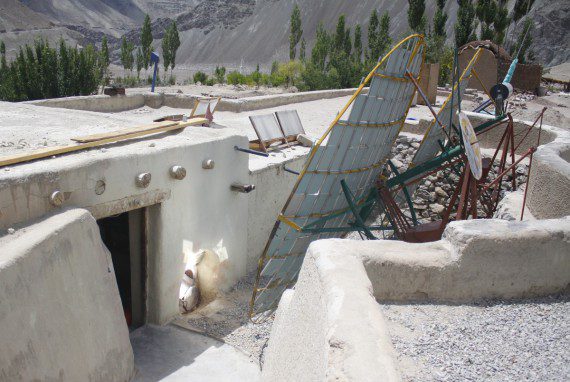
SECMOL and the Future of Education
What if education wasn’t just preparation for the future—but a rehearsal for survival? In Ladakh, where glaciers vanish faster than governments can adapt, the urgency of this question is no longer philosophical. It is visceral. And SECMOL answers it not in theory, but in practice.
The students here are not being groomed for corporate jobs in Delhi or Bangalore. They are not chasing degrees to flee their valleys. They are staying—and studying—to heal them. Climate resilience at SECMOL is not a buzzword. It’s in the greenhouse built from scrap plastic. It’s in the seasonal water calculations for the toilets. It’s in the debate over how many solar panels are enough for winter.
This is education in the Anthropocene—an age where humans have become a geological force, and schools can no longer afford to teach as if the world is stable, predictable, or linear. SECMOL teaches young people to be systems thinkers, emotional navigators, and practical builders. To understand that knowledge without relationship is not wisdom.
European educators often speak of 21st-century skills: creativity, collaboration, critical thinking. SECMOL goes further. It cultivates resilience in its rawest form: the ability to adapt, to persist, to regenerate. The ability to think without instruction, to build without supervision, and to lead without domination.
It also confronts another unspoken truth: that much of modern education, especially in post-colonial regions, was designed to separate people from their land, their language, and their sense of self. SECMOL reclaims all three. Students speak Ladakhi with pride. They study their rivers, not Rome. They learn that surviving winter at 3,500 meters is no less noble than passing a national exam.
For those in Europe who worry that their schools are producing anxious, disconnected graduates—SECMOL may offer not a solution, but a provocation. What if education was rooted again? What if classrooms had walls made of mud, not pixels? What if we trusted young people to manage their world instead of insulating them from it?
SECMOL doesn’t pretend to fix everything. But it does suggest that the future of education is not bigger, faster, or smarter—it’s slower, deeper, and closer to home. And in a century likely defined by disruption, perhaps that is the most radical preparation of all.
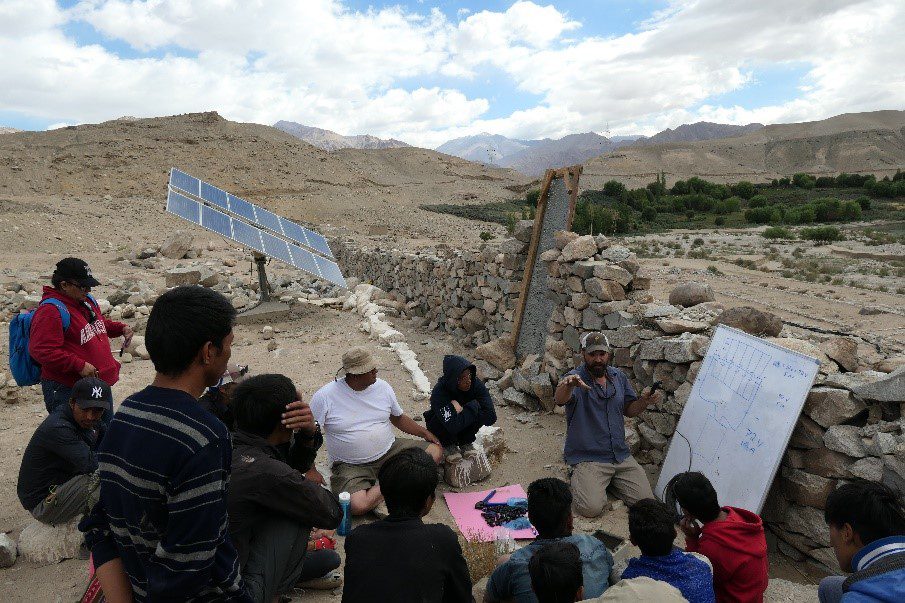
FAQs — Everything You Want to Know About SECMOL
What does SECMOL stand for?
SECMOL stands for Students’ Educational and Cultural Movement of Ladakh. It is an alternative education movement founded in 1988 to reform and reimagine education for Ladakhi youth, especially those who have been marginalized by conventional systems.
Where is SECMOL located?
SECMOL is located in Phey village, approximately 18 kilometers from Leh, the capital of Ladakh, India. The campus is situated near the Indus River and is accessible by taxi or foot. Public transportation does not reach the campus directly.
Can tourists visit SECMOL?
Yes, but only on designated days and with prior permission. Visitors must register in advance through the official website at secmol.org. SECMOL is not a tourist site; visits are intended for those who genuinely want to learn from and engage with the community.
Who can volunteer at SECMOL?
Anyone over the age of 18, from India or abroad, can apply to volunteer. SECMOL looks for individuals who are humble, adaptable, and interested in hands-on learning. A minimum stay of one month is typically required, and roles may include English teaching, media support, sustainable construction, and more.
What is life like on the SECMOL campus?
Life at SECMOL is structured but flexible, with daily chores, student-led meetings, sustainability projects, and collaborative learning. The campus runs on solar power, uses compost toilets, and practices democratic governance. Students and volunteers share meals, work, and responsibilities.
Is SECMOL affiliated with any religion or political movement?
No. SECMOL is a secular, non-political, and non-profit educational initiative. It focuses on sustainable living, cultural pride, and practical learning rather than ideology or religious doctrine.
Does SECMOL issue academic certificates?
SECMOL does not operate as a formal academic institution. It focuses on skill development, character building, and alternative education. While it may support students in re-entering formal education, it is not an accredited degree-granting body.
How is SECMOL funded?
SECMOL is supported through donations, volunteering contributions, grants from socially responsible organizations, and partnerships with like-minded institutions. It operates on a minimal budget and maximizes the use of local materials and renewable energy.
What is the best time to visit SECMOL?
The ideal time to visit is between May and September when the weather is accessible and programs are active. Winter visits are discouraged unless part of a pre-arranged long-term stay due to harsh weather and limited infrastructure access.
Can SECMOL’s model be replicated in Europe?
While SECMOL is deeply rooted in the Ladakhi context, its principles—community governance, sustainability, hands-on education—are adaptable. Several educators and NGOs from Europe have visited the campus to explore how similar models might be reimagined for their local contexts.

Final Reflections from the Indus Valley
It was late afternoon when I left SECMOL for the last time. The light had grown long and golden, bending across the Indus like a ribbon of silk. Students were gathered around a broken ceiling fan, arguing in three languages over the wiring. Someone laughed, then corrected their grammar mid-sentence. A kettle whistled in the solar kitchen.
I paused by the entrance gate, that modest arch of stone and earth, and looked back. There was no sign, no anthem, no bell ringing. But there was something else: a sense of stillness so dense it almost hummed. Here was a school without pretense, where education had returned to its oldest roots—curiosity, community, and care.
SECMOL is not perfect. Nor does it pretend to be. Its walls crack. Its budgets are tight. Its people make mistakes. But in its flaws lives something rare: a willingness to evolve, guided not by efficiency but by intention. It is a place that grows people—not products.
For those of us from Europe, educated in glass buildings and managed syllabi, SECMOL feels like a gentle shock. It asks questions we’ve forgotten how to ask. What does a student really need to thrive? How do we educate for a future we cannot predict? How much can a school repair—not only in the mind, but in the world?
As I descended the dusty path toward the river, I passed a small sign painted by hand. It read: “Don’t just go out to change the world. First, let the world change you.” I thought of the glacier Sonam Wangchuk had carried to New York. I thought of students melting shame into purpose. And I thought—perhaps this, too, is a kind of glacier. One that does not vanish, but moves silently across time, reshaping everything it touches.
SECMOL is not a destination. It is a question. A place that dares us to remember what education can be. And if you go there, walk softly. Listen more than you speak. Leave your expectations at the gate. You might return with something far more valuable than answers.
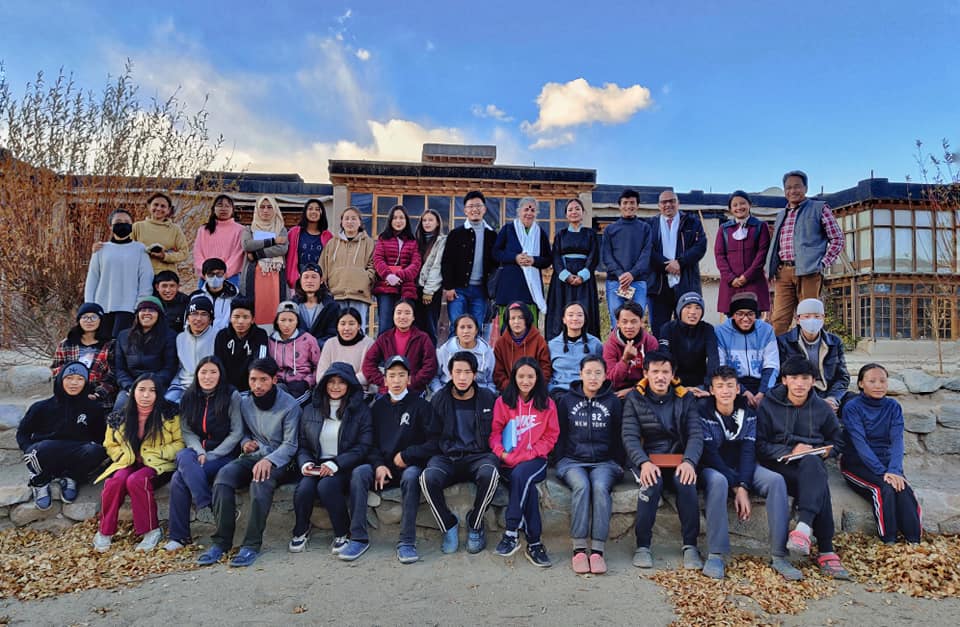
About the Author
Edward Thorne is a British travel writer and former geologist whose prose is marked by sharp observation, restrained emotion, and an unwavering devotion to the physical world. He does not describe feelings — he describes what is seen, heard, and touched. And in those descriptions, readers find the silence, awe, and disquiet of remote landscapes.
He has walked ice deserts in Greenland, mapped the shifting rivers of the Amazon, and once spent an entire winter in the shadow of Annapurna without electricity, studying snowmelt patterns with a stick and a notepad. His work is less about places than about the spaces between them — the slow passage of time, the resilience of silence, the traces of meaning left by weather, stone, and human hands.
When not on the move, Edward lives in a cottage without Wi-Fi on the Welsh coast, where he writes by candlelight and rarely answers the phone. He believes the best stories are found by walking slowly and listening long, and that schools like SECMOL are not exceptions — but beginnings.

